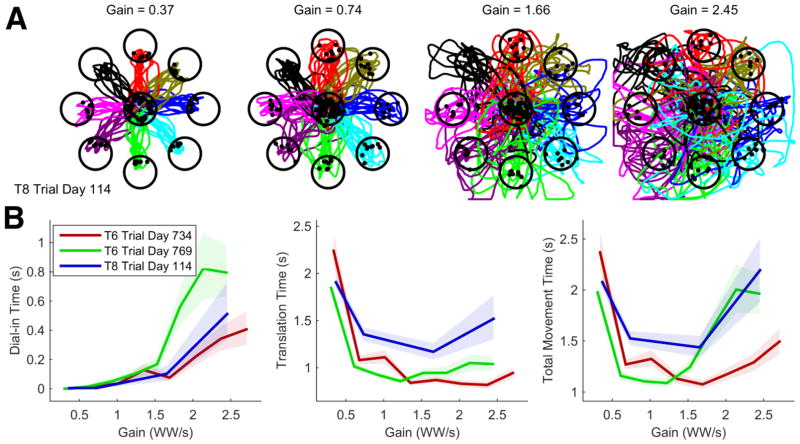Figure 2.
Effect of cursor gain on iBCI movements. (A) Cursor trajectories (colored by target) made by T8 under four different cursor gains. Cursor movements made at higher gains are faster but lack accuracy; the cursor takes curved paths towards the target and circles around it instead of coming to a complete stop on top of it. (B) Dial-in Time, Translation Time, and Movement Time as a function of cursor gain (reported in workspace widths per second at terminal speed) for three sessions (2 with T6, 1 with T8). Error regions are 95% confidence intervals for the mean. Cursor gain has a large effect on movement time, in contrast to the scale invariance predicted by Fitts’ law.

